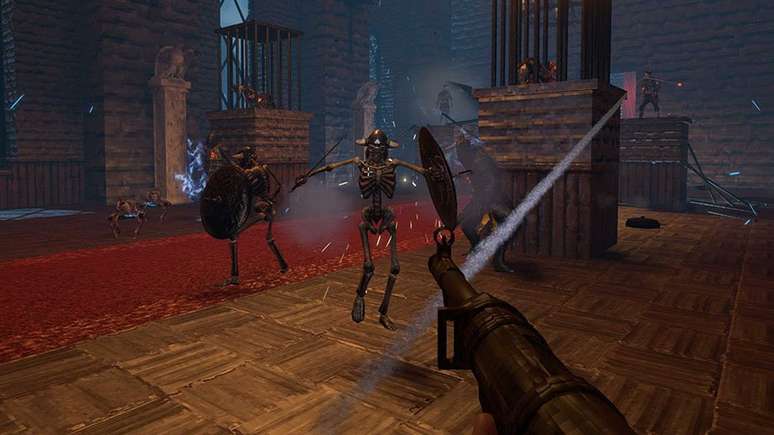Diverse destinations such as Brazil’s only mountain range, the Atlântida Portal, and an isolated national park on the high seas […]
Every Brazilian knows the names of the most popular national tourist destinations by heart, even without having set foot in places like the Amazon, the Northeast or Foz do Iguaçu.
But far beyond the tourist brochures, there is a country that hides in addresses that few know about.
Among the proposals for different places there is the only mountain range in Brazil, a destination that was once called the Gateway to Atlântida and even a national park, isolated on the high seas, which we find hard to believe exists.
National tourist destinations
CREST
Minas Gerais
Known by UNESCO as a World Biosphere Reserve and as the largest mountain range in Brazil, the Espinhaço mountain range is made up of the second largest mountain group in Latin America and is considered the only mountain range in Brazil.
The region extends over three biomes (Atlantic Forest, Cerrado and Caatinga), in 172 municipalities, in an area of a thousand kilometers in length. 90% of the mountain range is located in Minas Gerais and the remaining 10% in Bahia, passing through the Chapada Diamantina.
In addition to mountaineering and geology activities, the region has canyons, lakes, rivers, waterfalls and trails of different levels, distributed in conservation units such as Grão Mogol State Park, Serra do Cipó National Park and Parque Nacional das Evergreen.
SEGA RONCADOR
Mato Grosso
This adventure tourism destination, in a transition zone between the Amazon and the Cerrado, is surrounded by a mountain range that extends to Pará.
It is known for attractions such as low-difficulty trails, archaeological sites, natural pools at the foot of waterfalls (in the mountains, among other things) and rock formations in the Vale dos Sonhos.
A destination for esotericists and adventurous travellers, the Serra do Roncador, whose name would refer to the sound of the wind tearing apart the cracks in the rocks, was once called the Portal of Atlântida and access to the Hollow Earth, a sort of intraterrestrial city.
FIND OUT MORE
ABROLHOS
Bay
Made up of five islands, this archipelago in the south of the state boasts one of the greatest biodiversity in Brazil and is home to unique species in the world, such as the Bahia brain coral and the chapeirões, impressive coral columns that emerge from the seabed, in the shape of a giant mushroom .
However, Abrolhos is not tourism for those seeking land adventure, except on the island of Siriba, where ICMBIO monitors lead visitors along a short trail to observe grazinas and white gannets.
The best of the destination is at the seaside, where it is possible to snorkel, see shipwrecks and scuba dive, on trips that can be round trip, from Caravelas or Prado, or up to three days, in diving cruises with cabins, meals and underwater activities.

CATIMBAU
Pernambuco
290 km from Recife, Buíque is one of the main gateways to the Catimbau Valley, one of those places we find it hard to believe exists.
The main attraction is the Catimbau National Park, a protected area of 62 thousand hectares, created in 2002, and with around 13 official trails, including geomorphological formations and 30 archaeological sites cataloged by IPHAN (Institute of National Historical and Artistic Heritage) which gave Catimbau the title of Capital of Pernambuco for Rock Art.
There all trails must be walked with a registered guide, whose association is based in the village of Vale do Catimbau, Buíque district. The most evocative of these is the Sanctuary Path (7 km, round trip), which has as its highest point a natural stone amphitheater that was once used as a sacred place for indigenous rituals.
PLATE OF TABLES
Maranhao
It is located in the south-west of the state, 220 km from Imperatriz.
This plateau is a sequence of table-shaped plateaus that hide waterfalls, canyons and ancient rock formations, in ten municipalities, including Carolina and Riachão.
The best-known attraction is the national park that bears the name of the destination, an area of approximately 160 thousand hectares, considered one of Brazil’s newest conservation areas and home to the powerful Prata and São Romão waterfalls.
But there are also walks on the Tocantins river, natural viewpoints overlooking the Morro do Chapéu, wet paths through canyons and natural pools with exaggeratedly blue waters, such as the Encanto Azul.
PIAUIENSES SHEETS
Piauí
In these Lençóis, Brazil welcomes visitors with scenery little known to those traveling through the Northeast.
Comparisons with neighboring Maranhão are inevitable, but it’s all so recent that tourist activities only started in 2017. So wherever you go, you feel like you’re the first to arrive.
Eight kilometers from the center of Parnaíba, the guided buggy tour begins in Lençóis Piauiense, in which tourists travel around 30 km of dunes, aboard semi-automatic quads.
Source: Terra
Ben Stock is a lifestyle journalist and author at Gossipify. He writes about topics such as health, wellness, travel, food and home decor. He provides practical advice and inspiration to improve well-being, keeps readers up to date with latest lifestyle news and trends, known for his engaging writing style, in-depth analysis and unique perspectives.








